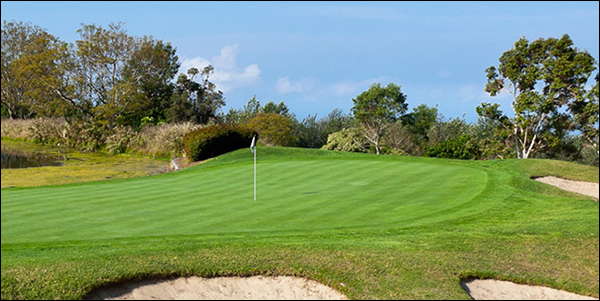“HGCSA Corner”
from the HSGA Newsletter – September 2024 – Issue 134
By Nolan Johnson
Director of Operations & Agronomy Makalei GC

Aerification, it’s that time of the year again! As Superintendent’s, we see the look of frustration on your faces as you unknowingly show up to a course that were recently punched. Let’s face it, no golfers are ever thrilled to arrive at a course, only to find that they will be putting on greens that have just been aerated. There is a misconception that golf course Superintendents love aeration and we do it to make golfers mad. Nothing can be further from the truth.
From the Maintenance side: it costs a large amount of money to complete, it is time consuming, it wreaks havoc on equipment/mower reels/bedknives, and staff morale usually declines for the backbreaking work.
From the Operations side: there is usually a loss in revenue, staff has to deal with frustrated guests, the greens are slower and difficult to read, the roll is almost always affected, and sand gets everywhere.
So why do it? Because it’s the single-most important practice done on the course:
- Relieves Soil Compaction: Over time, the constant foot traffic and weight of maintenance equipment can compact the soil, reducing its ability to absorb water and nutrients. Aerification alleviates this compaction, allowing roots to grow deeper and stronger.
- Enhances Water and Nutrient Uptake: The holes created during aerification allow water, fertilizers, and air to reach the root zone more effectively. This improved access supports the turf’s health, making it more resilient against drought and disease.
- Reduces Thatch Buildup: Thatch, a layer of dead grass and organic matter, can accumulate on the surface and hinder water infiltration. Aerification helps break up thatch, preventing it from becoming too thick and suffocating the grass.
- Promotes Healthy Root Growth: By creating spaces in the soil, aerification encourages roots to expand and grow deeper. This leads to a more robust root system that can better withstand environmental stresses.
For more information on golf course maintenance practices to promote healthy turfgrass management, feel free to visit the USGA website, Course Care page.